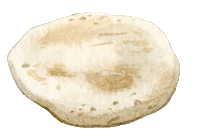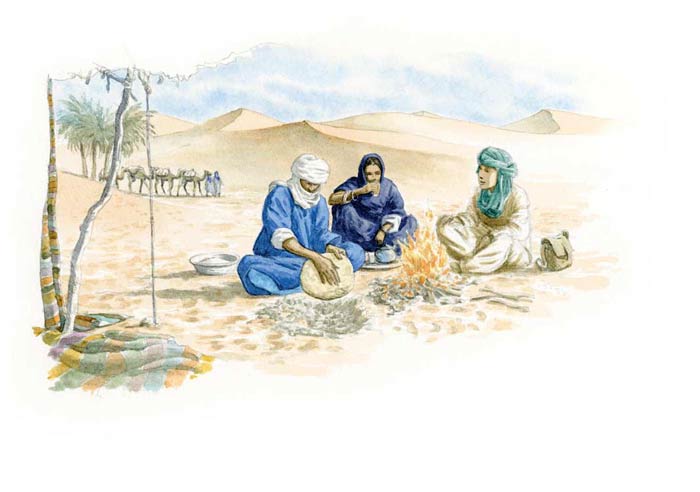Taguela

Form: Round, flat bread
Country of origin: Central Sahara
What distinguishes it from other methods of bread making: Cooked in the sand
Category of bread: (2 and 7) In the large family of flat breads, this is the only one that never sees an oven or a kitchen. It is a specialty of the Tuaregs – the blue people of the desert – like the gurs the nomads of the Qatar region eat
Particularity: Eaten with a ragout made with what God and the genies of the desert have provided
Ingredients: Millet or wheat flour; salt; warm water

Central Sahara
Desert people have their bread, like everybody else. Of course you have to know how to draw on the pluses and minuses that their Spartan world offers. Westerners who go in search of their inner selves in this great meditational mirror of sand were able to partake of this simple joy of preparing these fat millet and wheat griddlecakes. The experience of chewing mouthfuls of bread, with bits of ash still sticking to its skin, or even bits of the sand in which it was cooked, provide unforgettable moments.
The successful outcome of the Tuareg taguela therefore depends essentially on the quality of the fire that one manages to start in the middle of the desert. If this fire has been prepared with camel dung, twigs and branches, one has to be careful to separate the parts that have not yet burned or the embers that are too large when making this natural “oven”. The idea here is to avoid that the griddlecakes be submitted to too intense of a heat source when cooking, and that they don’t burn.
To do this, near the fire, you have to dig out a hole wider than the diameter of the taguela and deep enough to hold the ashes and embers removed from the fire. Once this hole is dug, a griddlecake can be run through the fire to seal its “skin” so the sand will not stick to it, and then placed in the hole. It is then covered with a layer of sand a thick layer of small embers and ashes. The cake is left to cook for about 30 minutes, and then turned. At this time the embers are changed. When cooked, the cake is rinsed with water and carefully examined so as to remove any parts that might have burned, despite all the precautions taken.
v

